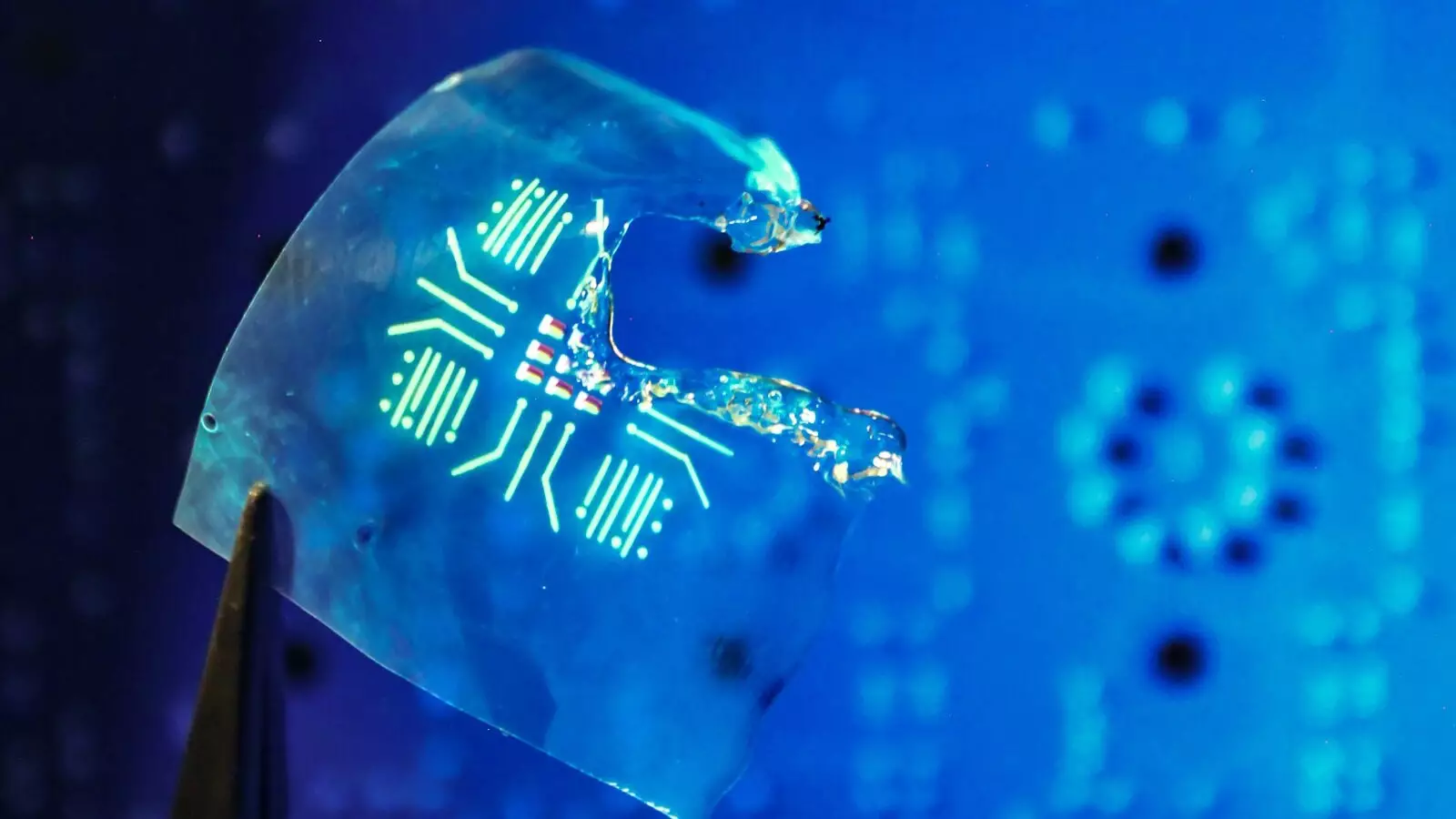In our modern world brimming with technological advancements, luminescent polymers have emerged as a vital category of materials revolutionizing electronics. From the displays of smartphones to advanced navigation systems, these polymers are celebrated for their ability to emit light while maintaining remarkable flexibility and stretchability. However, their convenience comes at an environmental cost. The journey of electronics culminates when they reach the end of their lifecycle, often resulting in piles of electronic waste (e-waste) that burden our landfills and ecosystems. The challenge lies not merely in proper disposal but in the laborious and resource-intensive processes required to recycle these materials.
This growing concern has led researchers to explore sustainable alternatives, illuminating a path toward responsible material design. Recent breakthroughs in the field promise to reshape our approach to e-waste, marrying functionality with sustainability.
Bridging the Gap Between Functionality and Sustainability
A noteworthy breakthrough comes from a collaborative effort involving top researchers led by the U.S. Department of Energy’s Argonne National Laboratory in conjunction with esteemed institutions like the University of Chicago, Purdue University, and Yale University. Their innovative approach targets the design of luminescent polymers that are not only high-performing but also environmentally benign.
The crux of their solution lies in the incorporation of a chemical known as tert-butyl ester into the luminescent polymers. This chemical enables the material to decompose under mild acidic conditions or through moderate heat, effectively transforming the recycling process. Traditionally, electronic waste presents a myriad of obstacles during recycling—much of which stems from the tenacity of these synthetic materials. This innovative design allows future electronic devices to retain their high-performance light-emitting capabilities while facilitating a sustainable lifecycle.
Incredible results have emerged from their tests, with the new polymers achieving impressive electroluminescence ratings that outperform existing biodegradable alternatives by a staggering tenfold. These advancements not only highlight the team’s ingenuity but also emphasize the critical need for integrating sustainability into the heart of electronic design.
Future-Ready Materials: A New Horizon
The vision of creating a sustainable electronics industry sees the potential of these biodegradable luminescent polymers unfolding across various applications. Researchers are keen on expanding their usage in existing technologies, such as medical imaging systems and display screens, aiming for a broader impact. The possibilities extend beyond simple functionality; they feel a sense of responsibility to ensure that future electronics are designed with recyclability woven into the fabric of their inception. As Yuepeng Zhang, a materials scientist at Argonne, highlights, practical compatibility is essential for gaining real-world traction.
The urgency of these developments cannot be overstated. The electronics industry, currently valued at approximately $46 billion annually, is poised for exponential growth, with projections indicating it could reach $260 billion by 2032. With rising consumer demands come escalating environmental burdens. Hence, initiatives aimed at creating easily recyclable materials could significantly mitigate the impending e-waste crisis.
The Path Forward: From Lab to Market
While the promise of these new polymers is extraordinary, the transition from laboratory breakthroughs to practical applications in consumer electronics is fraught with challenges. The ongoing testing phase is crucial for determining the real-world viability of these materials in everyday devices like smartphones and laptops. The researchers understand that this is merely the beginning of a broader movement toward eco-conscious technology.
The success of this endeavor is vital, not only for paving the way for future applications but also for reducing the environmental footprint of e-waste. Jie Xu, the project lead, encapsulated this goal best when emphasizing the importance of designing electronics with recyclability in mind. The meticulous attention to both form and function in polymer development showcases a budding realization within the tech industry: sustainability is no longer an optional afterthought; it is imperative.
As the field continues to evolve, this innovative strategy could serve as a benchmark in sustainable electronics, encouraging others to follow suit. The journey toward a more responsible electronics industry may be arduous, but with pioneering concepts like these, the hope for a sustainable future in technology remains bright.


Leave a Reply